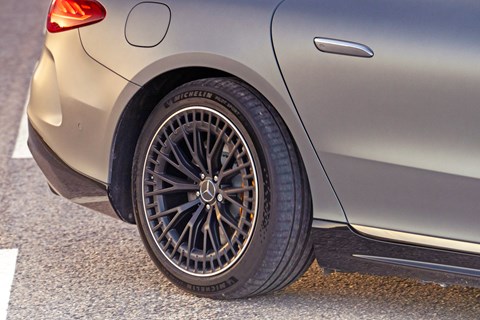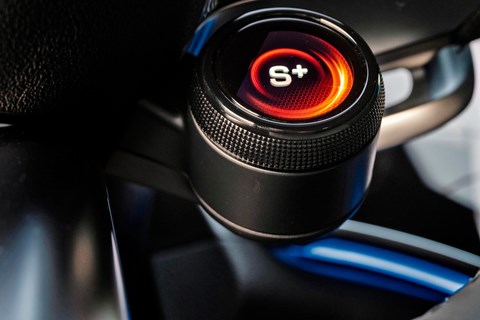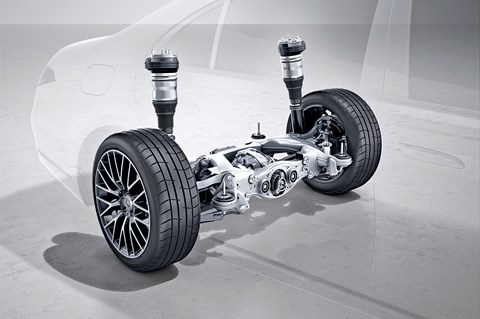- Merc’s tight RWS system tested
- Up to 10º of turning
- We test it on an AMG EQS
The concept of four-wheel steering (4WS) on a powered vehicle is nothing new. After all, inventor Bramah Joseph Diplock patented a four-wheel-drive and 4WS system for traction engines in 1893. Although there was much experimentation over the decades, it wasn’t until the 1980s that you could buy a car fitted with such a system. For Europeans, that car would be the third-generation Honda Prelude.
A few other manufacturers dabbled briefly, but by the early 2000s 4WS was out of vogue. However, with cars getting ever bigger and heavier and electronics getting ever smarter and more powerful, there has been a resurgence over the past few years. Indeed, the Mercedes EQS has four-wheel steering as standard, as do non-PHEV versions of the S-Class although confusingly there are two different systems offered, one of them using two different angles of turn.
All work in the same way, by turning the rear wheels the opposite way to the fronts below a certain speed to boost agility, and the same way as the fronts at higher speeds to improve stability. The difference is that on entry-level EQS models the maximum angle applied to the rear wheels is 4.5º, with higher trim levels boosting this to 10º (or it can be purchased as an over-the-air upgrade). The AMG EQS 53 we’ve tested it on has its own version, and manages up to 9º.
The 4.5º version is effective but familiar – the Prelude system achieved similar results. It gives a slight boost in manoeuvrability around town and a subtle stability improvement at speed. It’s impressive… until you experience the higher-angle alternatives.

These more extreme versions reduce the turning circle of this giant electric limo to around that of a VW Golf, the rear wheels starting to resemble those of a forklift truck. A few low-speed laps of our car park and some town driving reveal what a big difference it makes, the EQS feeling like it’s pivoting around a stake driven through the front armrest.
It also helps boost turn-in during slower cornering. It doesn’t fling the tail around like a Megane RS in Race mode, but it certainly helps the EQS feel shorter and more wieldy. Working in harmony with the active anti-roll bars and air suspension, it contributes to making 2.5 tonnes of luxury EV feel considerably smaller and lighter.
Mercedes rear-wheel steering: how it works

Dialling it up
Rotating the right-hand dial on the steering wheel changes the driving mode, the steering getting sharper as you scroll from Comfort through to Sport+
Pivotal moment
The 4.5º and 10º systems use the same hardware, employed to a different extent depending on what the software deduces from inputs via a variety of sensors

Behind the scenes
An electric motor drives a spindle on the rear axle via a belt. This is a more efficient solution than hydraulics and far more adjustable than a mechanical set-up
Mercedes rear-wheel steering: does it work?
Yes. You’ll really appreciate it in a tight multi-storey car park during a swift U-turn, and it makes town driving generally less daunting. There’s only so much it can do in the twisties, though.